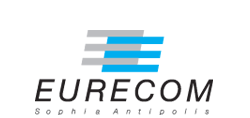Because multimedia data (in particular image and video) require efficient compression techniques to be stored and delivered, image and video compression is a crucial element of an effective communication system.
This course covers the most popular lossless and lossy formats, introduces the key techniques used in source coding, as well as appropriate objective/subjective metrics for visual quality evaluation.
Teaching and Learning Methods: Each class includes a problem session for students to practice the material learned. This course includes a limited number of lab session hours.
Course Policies: It is mandatory to attend the lab. sessions.
- Publication: Standard codecs: Image compression to advanced video coding Ghanbari, Mohammed Institution of Electrical Engineers (IEE) - 06/2003 - 430 p.
- Book: BARLAUD M. Compression et codage des images et des vidéos. Hermes Science Publications, 2001, 318p.
It would be good if you already have some knowledge about signal/image processing and Matlab, but it is not mandatory.
The course covers the following techniques, standards and metrics:
Techniques:
- Entropic coding, Huffman Coding
- Run Length Encoding
- Dictionary data-based compression
- Predictive Coding
- Discrete Cosine Transform
- Block-matching
- Vector Quantization
- Wavelets
- Fractals.
Standards:
- fax
- GIF, JPEG, JPEG2000
- H.26x, MPEG-x (1, 2, 4); HEVC.
Metrics:
- RMSE, PSNR
- wPSNR, SSIM
Learning Outcomes:
- Become familiar with major image and video formats.
Nb hours: 21.00
Evaluation:
- Final Exam (100% of the final grade)



